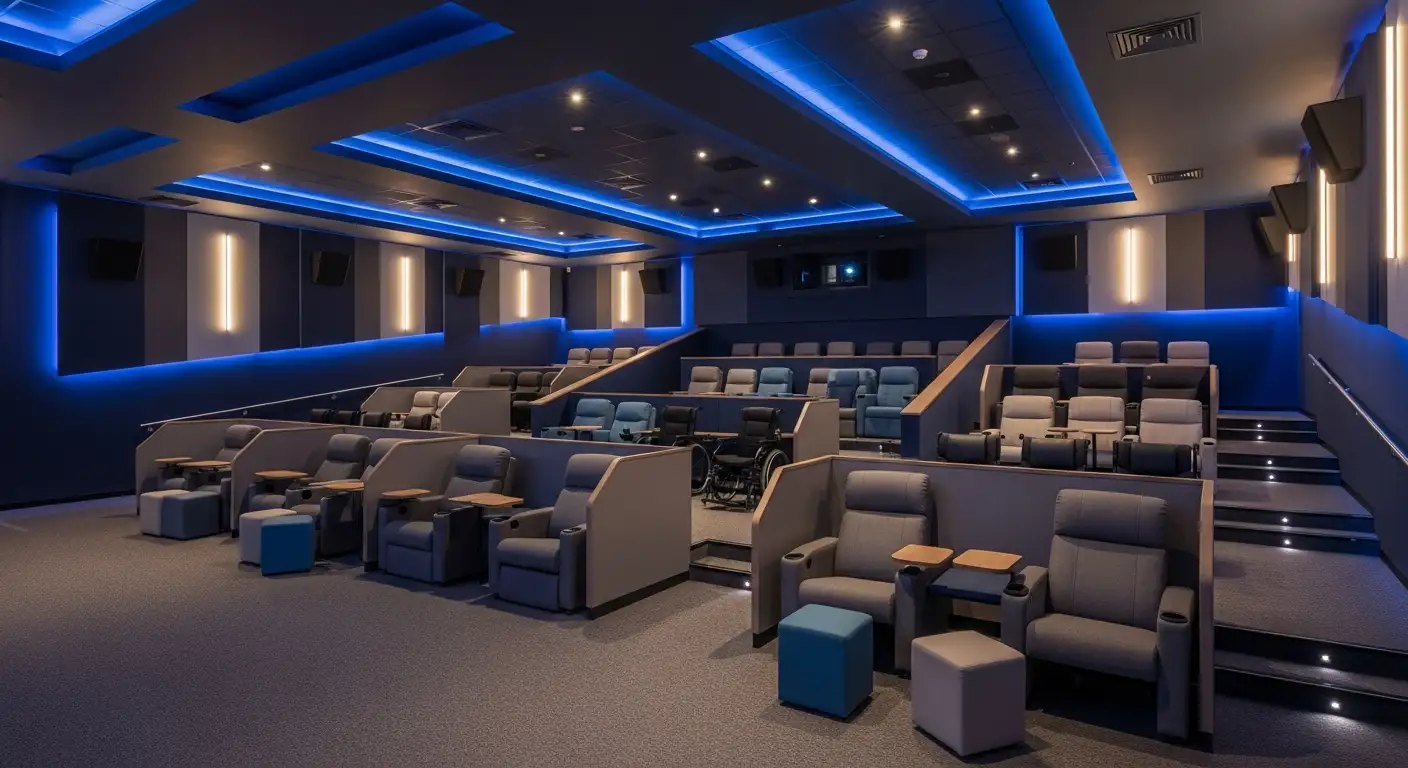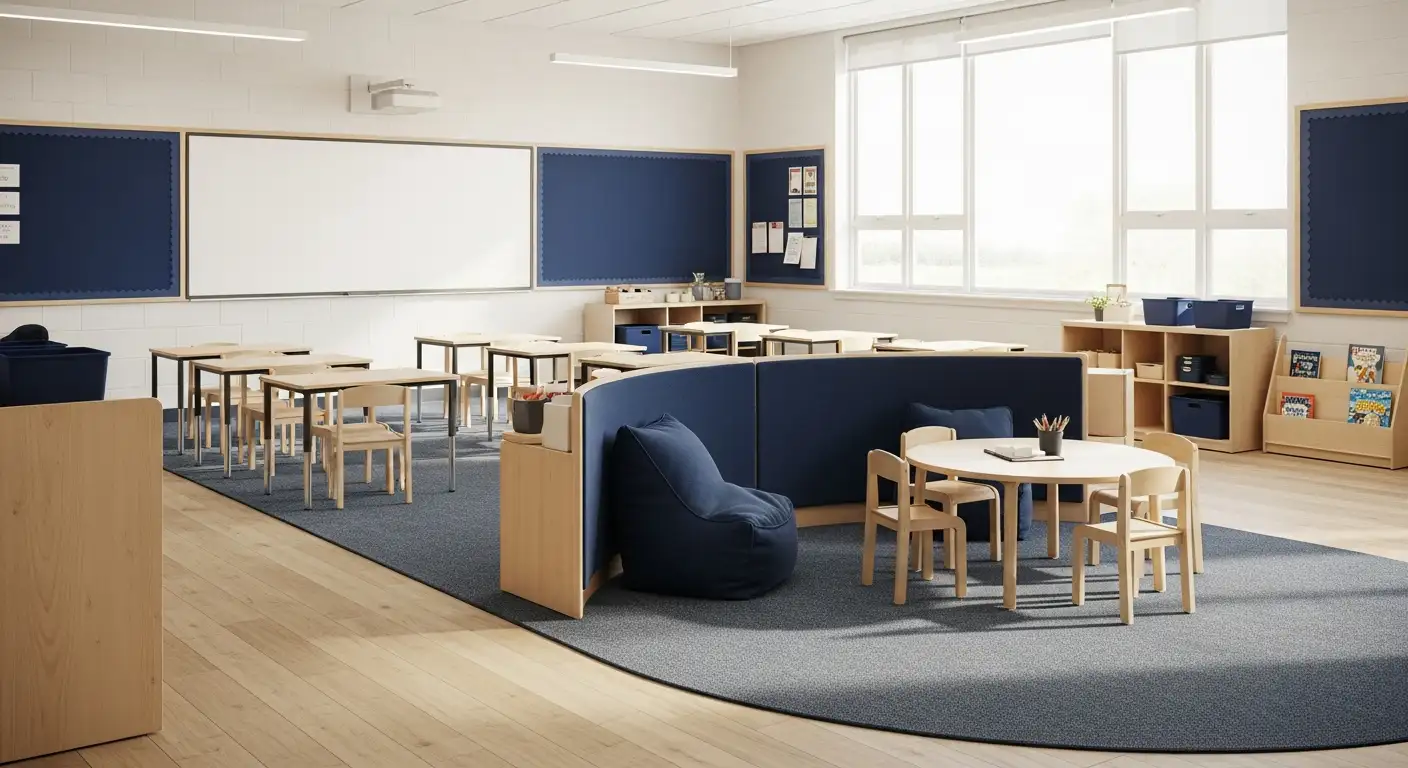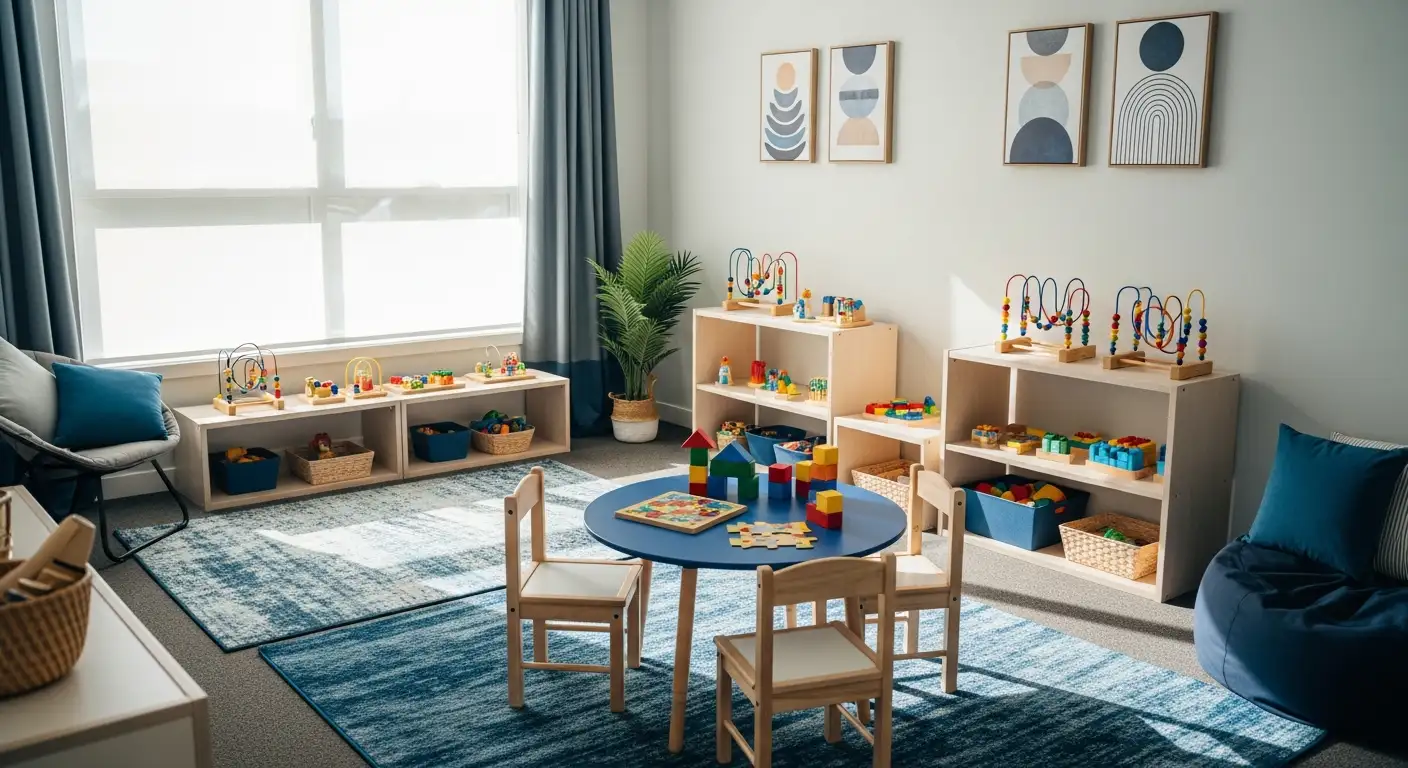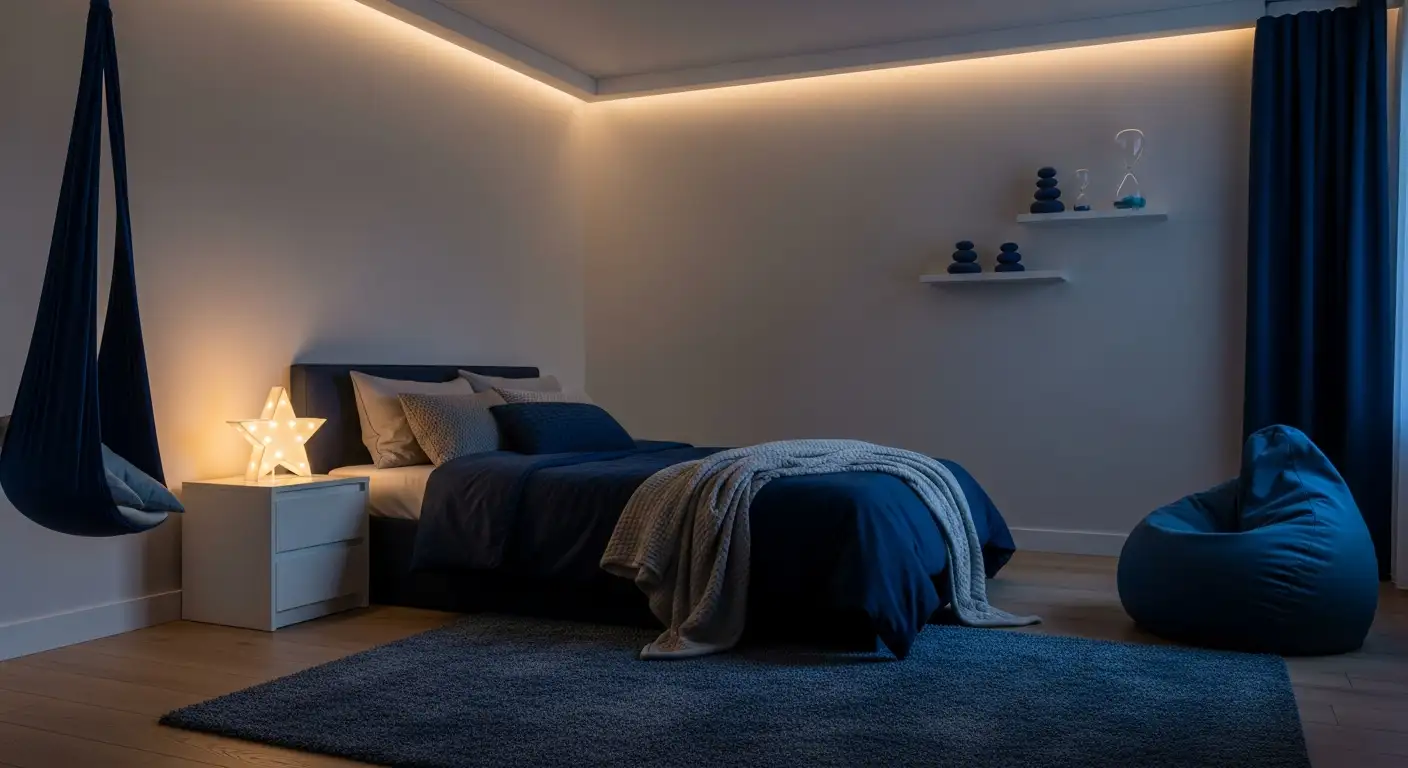The Connection Between Autism and Sleep Disorders
Exploring the Complex Interplay Between Autism and Sleep Challenges

Understanding Autism and Sleep: A Crucial Link
Sleep disorders affect a significant majority of children with autism spectrum disorder (ASD), impacting their health, behavior, and quality of life. This article delves into the relationship between autism and sleep problems, exploring causes, effects, and interventions to support affected individuals and their families.
Prevalence and Types of Sleep Problems in Autism
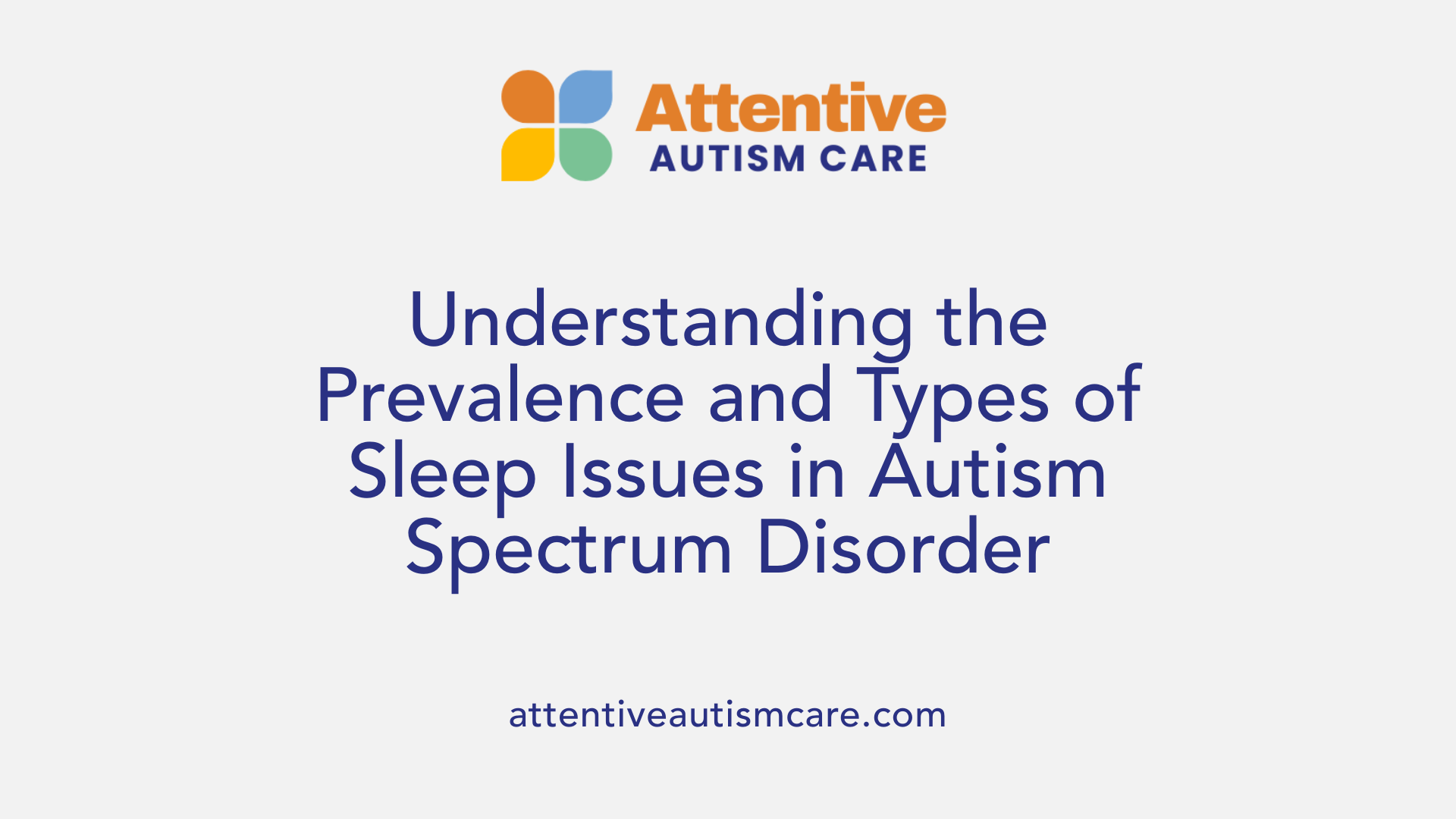
How prevalent are sleep problems in children with autism spectrum disorder (ASD)?
Sleep difficulties affect a significant majority of children with ASD, with over 40% and up to 93% experiencing various sleep issues. This rate is two to three times higher than in typically developing children, whose sleep problems range between 25% to 40%. Studies consistently show that around 46% of preschool children with ASD display clinically significant sleep disturbances.
What types of sleep problems do autistic children commonly experience?
Children with ASD face a broad spectrum of sleep issues that include:
- Difficulty initiating sleep (delayed sleep onset)
- Frequently waking during the night and having trouble maintaining sleep
- Early morning awakenings
- Sleep-related breathing disorders such as obstructive sleep apnea
- Restless legs syndrome (RLS)
- Parasomnias and circadian rhythm disruptions These problems often coexist and may include sleep anxiety, bedtime resistance, and short sleep episodes.
Do sleep problems change as children with ASD develop?
There is evidence suggesting developmental shifts in the patterns of sleep disturbances throughout childhood. Early childhood often sees sleep initiation and maintenance difficulties, while school-age children may experience changes in sleep architecture such as alterations in REM sleep and other sleep macrostructure anomalies. The severity and nature of problems also evolve, potentially worsening with age in some individuals.
Understanding these prevalent and diverse sleep problems in children with ASD is crucial for early identification and tailored intervention strategies to support better health and behavioral outcomes.
Impact of Sleep Disturbances on Behavior and Cognition in ASD

How Does Poor Sleep Affect Behavior in Children with ASD?
Sleep problems are highly prevalent among children with autism spectrum disorder (ASD), affecting up to 80% of this population. These disturbances have significant behavioral consequences. Poor sleep correlates strongly with increased externalizing difficulties such as hyperactivity, aggression, and tantrums. Autistic children experiencing sleep issues often show elevated externalizing behaviors compared to their well-rested peers.
Additionally, sleep disruptions are linked to heightened internalizing symptoms including anxiety and mood disorders. These internalizing problems often co-occur with sleep disturbances, contributing to a complex clinical picture that challenges both families and clinicians.
What Are the Cognitive and Mood Impacts of Sleep Problems in ASD?
Cognitively, children with ASD and disturbed sleep frequently display worsened core symptoms related to social communication and stereotypical behaviors. Sleep difficulties also exacerbate impairments in attention and executive functioning, particularly in low-functioning autistic children who often face chronic sleep-wake cycle disturbances.
Mood-wise, sleep problems intensify symptoms of anxiety and depression, further complicating the child’s emotional landscape. Poor sleep quality disrupts mood regulation, resulting in irritability and emotional dysregulation that negatively influence day-to-day functioning.
How Are Externalizing and Internalizing Problems Associated with Sleep Disturbances?
Research highlights a bidirectional relationship: sleep disturbances can worsen behavioral issues, while existing behavioral and emotional challenges can further impair sleep quality. Children with ASD who have severe sleep problems are statistically more likely to exhibit at least one psychiatric comorbidity, which may include externalizing problems such as aggression and internalizing issues like anxiety.
Anxiety acts as a significant mediating factor between sleep problems and restricted, repetitive behaviors (RRBs), suggesting intertwined mechanisms. Effective sleep interventions have shown improvements not only in sleep duration and quality but also in reducing these associated behavioral difficulties, indicating the importance of addressing sleep to mitigate both externalizing and internalizing symptoms.
| Aspect | Impact in ASD Children | Notes |
|---|---|---|
| Externalizing Behaviors | Increased hyperactivity, aggression, tantrums | Linked to poor sleep onset and night awakenings |
| Internalizing Problems | Heightened anxiety, mood symptoms | Anxiety may mediate link with repetitive behaviors |
| Cognitive Effects | Worsened social communication, attentional deficits | More severe in low-functioning ASD |
| Mood Regulation | Increased irritability and emotional dysregulation | Poor sleep disrupts daily mood stability |
Neurological and Genetic Underpinnings of Sleep Disorders in Autism
What shared etiologies link autism and sleep disturbances?
Sleep problems in children with autism spectrum disorder (ASD) may not simply be coincidental but could stem from common underlying causes. These shared etiologies involve complex interactions between alterations in brain architecture, genetic factors, and neurotransmitter abnormalities. This means that the very neurological frameworks contributing to autism also influence sleep regulation.
How does brain architecture differ in autistic children with sleep problems?
Research reveals that autistic children often display differences in sleep architecture compared to typically developing peers. Notably, they experience reductions in rapid eye movement (REM) sleep and disruptions in the broader sleep macrostructure. These neurological differences are evident in abnormal electroencephalogram (EEG) patterns, suggesting fundamental variations in the neural circuits that control sleep-wake cycles. Such brain-based alterations contribute to difficulties initiating and maintaining restful sleep.
What genetic and neurotransmitter abnormalities contribute to these sleep issues?
Genetic influences play a significant role in sleep disturbances observed in ASD. Variations and mutations in genes regulating circadian rhythms impact melatonin production and metabolism, a hormone central to sleep-wake regulation. For instance, some autistic children exhibit abnormal melatonin secretion patterns, including elevated daytime levels alongside reduced nocturnal melatonin. Moreover, neurotransmitter imbalances involving melatonin, serotonin, dopamine, and histamine further disrupt sleep architecture and circadian timing. These combined genetic and neurochemical factors form a biological substrate for the pervasive sleep challenges in autism.
Understanding these neurological and genetic underpinnings is crucial for developing targeted interventions that address both the behavioral and biological aspects of sleep disturbances in children with ASD.
Melatonin Dysregulation and Circadian Rhythm Abnormalities in ASD
What is the role of melatonin in sleep regulation?
Melatonin is a hormone produced by the pineal gland that plays a crucial role in managing the sleep-wake cycle. It helps signal to the body when it is time to prepare for sleep by regulating the timing of sleep onset and maintaining sleep quality throughout the night. Melatonin's secretion normally increases in the evening, promoting drowsiness, and decreases in the morning to facilitate wakefulness.
How is melatonin production and metabolism abnormal in autism?
In children with Autism Spectrum Disorder (ASD), melatonin regulation often shows significant disturbances. Some individuals exhibit abnormal production patterns such as elevated daytime melatonin levels paired with reduced nocturnal secretion, which disrupts their natural sleep timing. Genetic polymorphisms affecting enzymes responsible for melatonin metabolism can also alter hormone levels. These irregularities contribute to difficulties initiating and maintaining sleep, common issues in ASD.
What circadian gene mutations are implicated in sleep disturbances?
Research has identified mutations in circadian clock-related genes in ASD, which affect the body’s internal timing system. These mutations can interfere with the normal cycling and production of melatonin, leading to circadian rhythm misalignments. As a result, children with autism may experience insomnia, irregular sleep patterns, and chronic sleep-wake cycle disturbances. Such genetic factors suggest a shared biological basis between ASD and sleep dysregulation.
Together, melatonin dysregulation and circadian rhythm abnormalities provide a compelling explanation for the elevated prevalence of sleep problems in autistic children. Understanding these disruptions offers pathways for targeted treatments, including melatonin supplementation and therapies aimed at realigning circadian rhythms to improve sleep quality and overall wellbeing in ASD.
Alterations in Sleep Architecture in Children with ASD
Differences in REM and NREM Sleep
Children with autism spectrum disorder (ASD) often exhibit notable differences in their sleep architecture compared to typically developing peers. One of the most prominent alterations is a reduction in rapid eye movement (REM) sleep. REM sleep, crucial for emotional regulation and memory consolidation, tends to be decreased, potentially impacting cognitive and emotional functions in ASD. Alongside this, changes in the non-REM (NREM) sleep stages have also been observed, which could affect the overall restorative quality of sleep.
Sleep Macrostructure Abnormalities
The general organization or macrostructure of sleep in children with ASD shows abnormalities beyond just REM reductions. These include disrupted sleep stages distribution, fragmented sleep continuity, and irregular sleep cycles. Such alterations can lead to insufficient restorative sleep and contribute to daytime behavioral difficulties commonly seen in ASD, such as increased irritability and attention challenges.
EEG Pattern Variations Indicating Differences in Sleep Circuits
Electroencephalogram (EEG) studies reveal that children with ASD have distinctive brain wave patterns during sleep, suggesting fundamental differences in sleep regulating circuits. Variations include atypical slow-wave activity and altered spindles, which are markers of NREM sleep quality, and these differences reflect underlying neurophysiological anomalies. These EEG pattern changes underline the unique neural basis of sleep disturbances in ASD and may help guide more tailored treatment approaches.
Overall, altered sleep architecture in ASD highlights the complex interplay between neurological factors and sleep regulation, underscoring the importance of targeted interventions to improve sleep quality and, consequently, daytime functioning in these children.
Secondary and Tertiary Factors Exacerbating Sleep Problems in ASD
Impact of Anxiety, ADHD, and Chronic Pain on Sleep
Sleep disturbances in children with ASD are often worsened by secondary factors such as anxiety, attention-deficit/hyperactivity disorder (ADHD), and chronic pain. Anxiety, which frequently co-occurs with ASD, intensifies sleep issues by increasing difficulty in falling and staying asleep. ADHD symptoms like hyperactivity and impulsivity further disrupt sleep patterns, creating an additive or even synergistic effect on sleep quality. Moreover, chronic pain—often under-recognized due to communication barriers in autistic children—can prevent restful sleep and exacerbate nighttime awakenings.
Role of Poor Sleep Hygiene and Irregular Routines
In addition to secondary factors, tertiary influences such as poor sleep hygiene deeply affect sleep quality in ASD. Irregular bedtime routines, inconsistent sleep-wake schedules, and inadequate pre-sleep behaviors contribute to difficulties in initiating and maintaining sleep. Children with ASD are particularly vulnerable to disruptions due to the importance of routine in their daily functioning. Without structured and consistent sleep-related habits, sleep problems tend to persist or worsen.
Environmental Factors Influencing Sleep Quality
Environmental elements also play a crucial role in perpetuating sleep issues among autistic children. Sensory sensitivities common in ASD may make children more reactive to light, noise, and other stimuli in the bedroom environment, impeding their ability to fall asleep or causing frequent night awakenings. Adjustments such as creating a calm, low-stimulation sleep environment — with blackout curtains, white noise machines, or comfortable bedding — are often necessary to improve sleep quality.
Addressing these secondary and tertiary factors alongside primary neurological causes offers a comprehensive approach to managing sleep difficulties in children with ASD. Strategies that incorporate anxiety management, ADHD symptom control, pain assessment, improved sleep hygiene, and optimized sleep environments have demonstrated effectiveness in improving sleep outcomes and, consequently, daytime functioning.
Behavioral Interventions to Address Sleep Problems in Autism
What Are Sleep Hygiene Strategies for Children with Autism?
Sleep hygiene strategies are behavioral techniques designed to promote consistent, restful sleep. For children with autism spectrum disorder (ASD), these strategies focus on establishing regular bedtimes, limiting stimulating activities before bed, and creating calming pre-sleep routines. Consistency is crucial because children with ASD often thrive on predictable daily schedules, which helps reduce sleep onset latency and night awakenings.
How Does Caregiver Education and Involvement Help?
Caregivers play a critical role in managing sleep problems in children with ASD. Educating caregivers about the importance of sleep hygiene empowers them to implement practical routines and recognize early signs of sleep disturbance. This involvement includes training on behavioral techniques like positive reinforcement for staying in bed and strategies to manage nighttime anxiety. Studies show that when caregivers actively participate, children tend to have better sleep outcomes and improvements in daytime behavior.
What Modifications to the Home Environment Support Better Sleep?
Modifying the sleep environment can significantly improve sleep quality for autistic children. This includes ensuring the bedroom is quiet, dark, and at a comfortable temperature. Removing distractions such as electronic devices and using white noise machines or blackout curtains can help children fall asleep more easily. Personalized adjustments, like weighted blankets or sensory-friendly bedding, may also be beneficial, especially for children sensitive to tactile stimuli.
In combination, these behavioral interventions have demonstrated effectiveness in improving sleep onset and maintenance. They are especially valuable for children with low-functioning autism who may struggle with communication and benefit from structured, consistent approaches.
| Intervention Aspect | Description | Benefits for ASD Children |
|---|---|---|
| Sleep Hygiene Strategies | Regular routines, calming pre-sleep activities | Reduces sleep latency and night wakings |
| Caregiver Education and Involvement | Training on sleep management techniques, recognition of sleep issues | Enhances consistency and effectiveness of interventions |
| Home Environment Modifications | Quiet, dark bedroom, sensory accommodations | Creates comfort and reduces sensory triggers for awakenings |
This multifaceted behavioral approach addresses both primary and tertiary contributors to sleep problems in ASD and is often the foundation before considering pharmacological treatments.
Pharmacological Approaches to Sleep Disorders in ASD
Use and Efficacy of Melatonin Supplementation
Melatonin supplementation is widely used to treat sleep problems in children with Autism Spectrum Disorder (ASD). It has shown effectiveness in reducing sleep-onset latency and increasing total sleep time. Research indicates melatonin can improve sleep quality by addressing dysregulation of the melatonin hormone frequently observed in ASD, such as abnormal production patterns and circadian rhythm disruptions. Importantly, melatonin is considered both effective and safe for use in autistic children, making it a common first-line pharmacological treatment.
Other Pharmacological Agents
Besides melatonin, other medications like clonidine and certain antidepressants are employed to manage sleep disturbances associated with ASD. Although none of these drugs are specifically FDA-approved for sleep issues in ASD, they have demonstrated some efficacy in improving sleep parameters. For example, clonidine may help with initiating and maintaining sleep, while antidepressants can address co-occurring mood and anxiety symptoms that exacerbate sleep problems.
Treatment of Sleep Breathing Disorders
Sleep-related breathing disorders, notably obstructive sleep apnea (OSA), are also prevalent among children with ASD and can severely impact sleep quality. Treatments such as adenotonsillectomy and Continuous Positive Airway Pressure (CPAP) therapy are effective interventions for OSA. However, compliance with CPAP use may be challenging due to sensory sensitivities common in ASD. Addressing these breathing disorders pharmacologically or surgically is critical, as untreated OSA can worsen daytime behavior and cognitive functioning.
Overall, pharmacological treatments for sleep disturbances in ASD are varied and should be tailored to the individual child's specific sleep issues and co-morbid conditions. Combining medications with behavioral strategies typically yields the best outcomes.
The Bidirectional Relationship Between Sleep and Autism Symptoms
How do sleep problems exacerbate autism symptoms?
Sleep disturbances are highly prevalent in children with Autism Spectrum Disorder (ASD), affecting approximately 40-80% of this population. These sleep issues include difficulty initiating and maintaining sleep, early awakenings, and fragmented sleep episodes, which have been shown to worsen core ASD symptoms. Poor sleep is linked to increased severity of social communication deficits, stereotypic behaviors, and heightened maladaptive behaviors such as tantrums and aggression. Moreover, children with low-functioning autism often experience chronic sleep-wake cycle disturbances that correlate with their cognitive impairments, intensifying behavioral and emotional challenges.
How do behavioral challenges impact sleep quality in children with ASD?
Behavioral difficulties including hyperactivity, aggression, anxiety, depression, and restricted repetitive behaviors (RRBs) are strongly connected with sleep problems in children with ASD. These emotional and behavioral challenges may either independently worsen sleep quality or act synergistically with existing sleep disturbances. Anxiety, in particular, often mediates the relationship between sleep problems and repetitive behaviors. Additionally, co-occurring conditions such as ADHD and chronic pain can exacerbate sleep disturbances. This bidirectional effect means that troublesome behaviors both result from and contribute to poor sleep, creating a reinforcing cycle.
Why is addressing sleep important for overall functioning?
Addressing sleep disturbances in children with ASD is essential for improving daytime behaviors, social skills, mood, and overall family well-being. Research demonstrates that interventions targeting sleep—ranging from behavioral strategies like sleep hygiene education to pharmacological treatments such as melatonin—can significantly reduce sleep-onset latency and night awakenings. Improved sleep frequently correlates with reductions in externalizing behaviors, anxiety, and depression. Cognitive behavioral therapy tailored for ASD has also shown promise in alleviating insomnia and enhancing behavioral outcomes. Therefore, integrating sleep assessments and interventions into routine clinical care for children with ASD can substantially elevate quality of life and functional capacity for both children and their families.
Screening and Assessment of Sleep Problems in Children with ASD
Importance of Early Detection
Early identification of sleep problems in children with Autism Spectrum Disorder (ASD) is crucial. Sleep disturbances are highly prevalent, affecting approximately 40-80% of children with ASD, and are linked to worsening behavioral and emotional difficulties. Detecting sleep issues promptly can lead to timely interventions, potentially improving children's daytime behavior and overall family quality of life.
Tools Such as Children’s Sleep Habits Questionnaire (CSHQ)
The Children’s Sleep Habits Questionnaire (CSHQ) is a widely used parent-report tool designed to screen for sleep problems in children with ASD. It effectively captures various sleep domains including bedtime resistance, sleep onset delay, night awakenings, and sleep anxiety. For instance, a study showed that 46% of preschool children with ASD scored 48 or above on the CSHQ, indicating significant sleep problems. The CSHQ’s ease of use makes it suitable for routine clinical practice.
Associations Between Sleep Problems and Psychiatric Comorbidities
Sleep disturbances in children with ASD are strongly associated with psychiatric and behavioral comorbidities. Children who experience severe sleep problems are four times more likely to have at least one psychiatric diagnosis, such as anxiety or mood disorders. Elevated scores on instruments like the Child Behavior Checklist (CBCL) often co-occur with sleep issues, particularly in areas of internalizing symptoms (e.g., anxiety, depression) and externalizing behaviors (e.g., hyperactivity, aggression). Anxiety also appears to mediate the link between sleep difficulties and restricted, repetitive behaviors in this population.
Early screening and comprehensive assessment using tools like the CSHQ helps clinicians better understand the complex interplay between sleep and mental health in children with ASD, guiding tailored intervention strategies.
Cognitive Behavioral Therapy (CBT) for Insomnia in ASD
What evidence supports the effectiveness of CBT in treating insomnia for children with ASD?
Research from the University of Missouri School of Medicine highlights that cognitive behavioral therapy (CBT) can effectively improve sleep and behavior in children with autism spectrum disorder (ASD) who suffer from insomnia. Insomnia affects up to 80% of children with ASD and is associated with worsened symptoms, including social impairment, communication difficulties, and heightened anxiety. This study showed that post-treatment, 85% of the children no longer experienced insomnia, demonstrating CBT’s potential efficacy in this population.
How are CBT sessions tailored for children with autism and insomnia?
The study involved 17 children aged 6 to 12 with ASD and insomnia and incorporated tailored, individualized CBT sessions. These comprised eight sessions focusing on the unique sleep barriers faced by each child. The program included components such as establishing consistent bedtime routines, relaxation techniques, and addressing behavioral factors that interfere with sleep. Objective sleep measures like wrist actigraphy and daily electronic sleep diaries were used to monitor improvements throughout the intervention.
What behavioral and parental wellbeing improvements are observed after CBT therapy?
Following the CBT treatment, children exhibited not only improved sleep quality but also positive changes in daytime behavior, such as reduced fatigue, enhanced alertness, and decreased anxiety and irritability. Parents reported improvements in their own wellbeing, likely due to the alleviation of sleep-related challenges and reduced caregiving burden. These promising results suggest that CBT can simultaneously enhance children's sleep and behavior while improving family quality of life.
This evidence supports the integration of tailored CBT as a critical approach for managing insomnia in children with ASD. Future expansions of this research include larger sample sizes and telehealth delivery to broaden access for families in rural or underserved areas.
Network Analysis of Autism, Sleep, and Emotional/Behavioral Difficulties
What symptom clusters are identified through network analysis?
Network analysis has revealed three distinct symptom clusters in children with autism spectrum disorder (ASD):
- Autism symptoms: Includes challenges in communication and social interaction.
- Emotional and behavioral difficulties: Covers depression, hyperactivity, behavioral issues, and daytime alertness problems.
- Sleep problems: Encompasses night waking/parasomnias, sleep anxiety/co-sleeping, and issues with sleep initiation and duration, often linked with anxiety.
These clusters illustrate the complexity and interrelatedness of symptoms affecting children with ASD.
What roles do depression, anxiety, and behavioral difficulties play?
Depression, anxiety, and behavioral difficulties emerge as central variables within these interconnected symptom networks. Their prominence suggests they strongly influence and potentially amplify the severity of autism-related symptoms and sleep disturbances.
This central role highlights the importance of recognizing and addressing these emotional and behavioral issues to improve the overall well-being of children with ASD.
How do bridging symptoms inform intervention strategies?
Certain symptoms such as depression, anxiety, and restricted, repetitive behaviors (RRBs) serve as bridging symptoms within and between the identified clusters. They create strong connections across different symptom groups, suggesting they play a pivotal role in linking ASD core symptoms, emotional problems, and sleep issues.
Targeting these bridging symptoms could be a strategic approach to disrupt the symptom network's connectivity. Interventions focused on these areas might reduce the overall symptom burden and improve outcomes for children with ASD.
| Symptom Cluster | Components | Role in Network |
|---|---|---|
| Autism Symptoms | Communication, social interaction | Core ASD features |
| Emotional and Behavioral | Depression, anxiety, hyperactivity, behavioral issues | Central variables shaping symptom severity |
| Sleep Problems | Night waking, sleep anxiety, initiation/duration issues | Linked closely to emotional difficulties via anxiety |
| Bridging Symptoms | Depression, anxiety, RRBs | Connect clusters and serve as intervention targets |
Applied Behavior Analysis (ABA) Therapy: An Overview

What is Applied Behavior Analysis (ABA) therapy and how is it used to support individuals with autism?
Applied Behavior Analysis (ABA) therapy is a scientifically supported treatment approach specifically designed to assist individuals with autism spectrum disorder (ASD). It centers on increasing positive, helpful behaviors and decreasing harmful or challenging ones by using principles rooted in behavioral science.
ABA begins with a thorough assessment of the person's skills and preferences. Therapists then develop individualized programs that employ various behavioral techniques like positive reinforcement, prompting, and structured teaching methods such as discrete trial training. These strategies rely on the A-B-C (Antecedent-Behavior-Consequence) model to understand what triggers behaviors and to reshape responses effectively.
The therapy aims to improve core areas such as communication, social skills, academic performance, and daily living skills. Additionally, ABA helps reduce problematic behaviors like aggression, tantrums, and self-injury that often accompany autism.
One of the strengths of ABA is its adaptability—it can be tailored for individuals of different ages and abilities and used in diverse settings, including homes, schools, and clinics. Typically, ABA involves intensive sessions over multiple years, making it a comprehensive and sustained intervention.
Supported by extensive research, ABA is widely acknowledged as an evidence-based best practice for autism treatment. Its focus on measurable progress and skill development makes it a valuable tool to support individuals with autism in achieving greater independence and quality of life.
Who Provides ABA Therapy and Their Qualifications
Roles of Board Certified Behavior Analysts (BCBAs) and Registered Behavior Technicians (RBTs)
ABA therapy is delivered primarily by two professional groups: Board Certified Behavior Analysts (BCBAs) and Registered Behavior Technicians (RBTs). BCBAs lead the process by assessing behavior patterns and designing individualized intervention strategies tailored to the needs of children with autism. RBTs implement these interventions directly with clients, working under the close supervision of BCBAs to ensure fidelity to treatment plans.
Educational and Certification Requirements
Professionals seeking to become BCBAs typically need to complete a master's degree focusing on applied behavior analysis or a related field, followed by supervised practical experience and passing the Behavior Analyst Certification Board (BACB) examination. As of mid-2021, more than 48,000 individuals have earned BCBA certification, reflecting widespread recognition and standardization within the profession. RBTs generally complete a specialized training course and competency assessment that equips them with skills to execute ABA techniques effectively.
Supervision and Ethical Practice Standards
BCBAs hold responsibility for supervising RBTs, monitoring treatment progress, and modifying strategies when necessary. They ensure that ABA therapy adheres strictly to ethical guidelines and best-practice standards established by the BACB and professional organizations. This supervisory structure maintains high-quality service delivery, protects client welfare, and upholds treatment integrity.
Collectively, these trained professionals form the foundation of effective, evidence-based ABA therapy for children with autism spectrum disorder.
Common Techniques Used in ABA Therapy for Autism
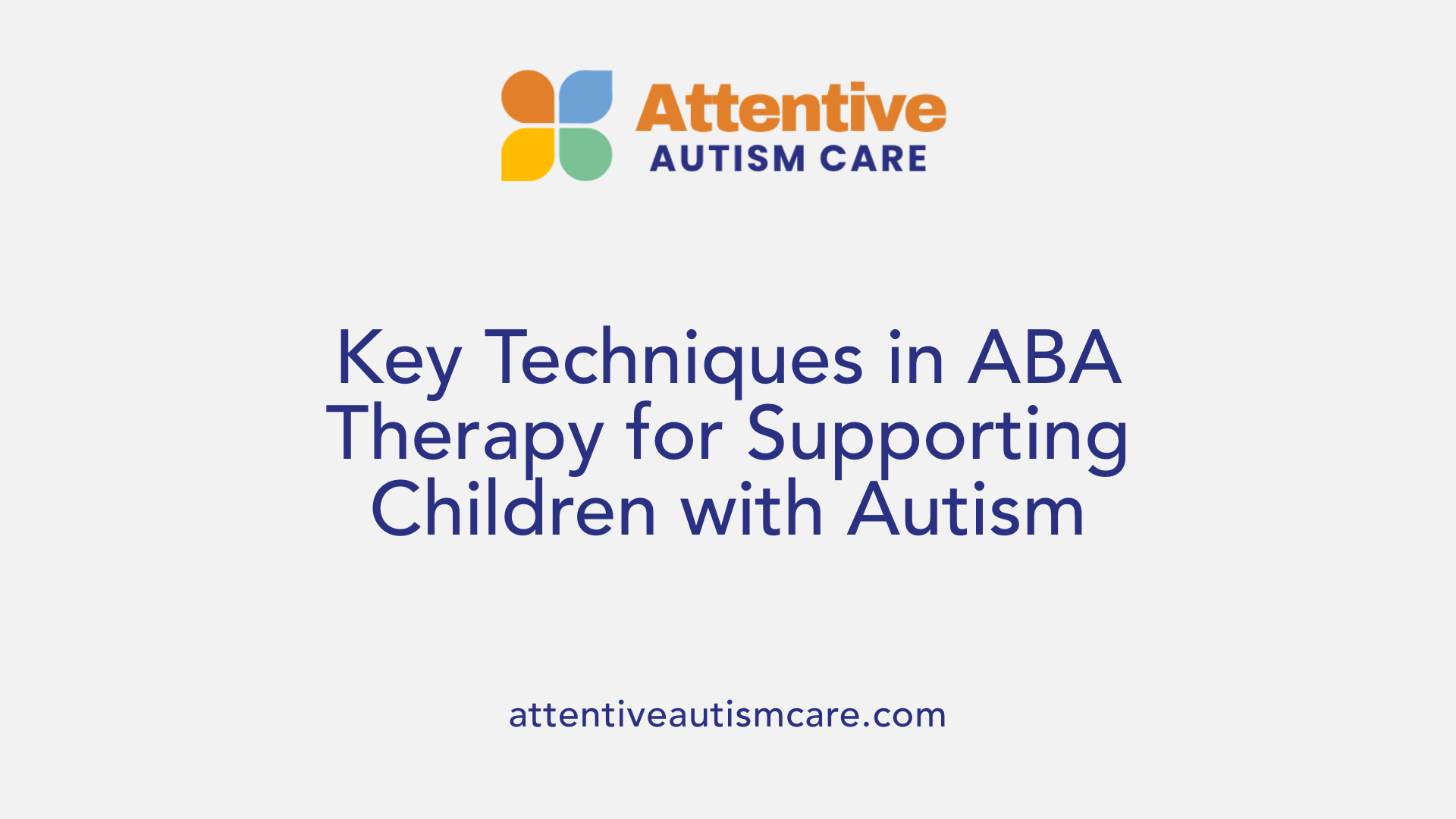
What are some common techniques used in ABA therapy for autism?
Applied Behavior Analysis (ABA) therapy utilizes several effective techniques tailored to support individuals with autism in learning new skills and improving behaviors.
Discrete Trial Training (DTT) is a structured method that involves clear, concise instructions and immediate responses. Each trial consists of a cue, the individual's response, and a consequence, helping reinforce correct behaviors systematically.
Task Analysis breaks down complex activities into smaller, manageable steps. This allows learners to master each component individually before combining them to complete the entire task.
Prompting and Fading techniques involve giving cues or assistance to guide behaviors initially, then gradually reducing these aids as the individual becomes more independent in performing the task.
Positive Reinforcement is a cornerstone of ABA, where desired behaviors are encouraged through rewards like praise or tangible incentives. Conversely, Extinction refers to the withholding of reinforcement following undesired behaviors, which helps decrease their occurrence over time.
Visual Modeling and Behavior Chaining utilize demonstrations and step-by-step linking of behaviors. Visual models, including video examples, allow learners to imitate actions, while behavior chaining builds complex sequences by connecting successive steps.
Additionally, strategies such as Redirection help shift the individual's focus from undesirable behaviors, and Script Fading facilitates better social interactions by gradually reducing dependency on rehearsed scripts.
These techniques collectively provide a comprehensive approach, enabling individualized support to improve skill acquisition and social functioning for those on the autism spectrum.
Effectiveness of ABA Therapy in Autism Support
How effective is ABA therapy for individuals with autism?
ABA (Applied Behavior Analysis) therapy is a well-established, evidence-based approach that has shown significant effectiveness in supporting individuals with autism spectrum disorder (ASD). Various research studies have demonstrated that ABA interventions can lead to meaningful improvements in communication, social skills, adaptive behaviors, and reductions in problematic behaviors.
Evidence supporting ABA outcomes
A notable study from Wuhan, China, involving 100 children with autism, revealed that early and structured ABA therapy promotes emotional regulation, social interaction, and independence. Evaluations using validated measures such as the KIST (Key Indicators of Social and Communication Skills Test) indicated consistent positive progress in these domains. Research consistently highlights that early initiation and intensity of ABA interventions are important factors contributing to positive outcomes.
Impact on communication, social, and adaptive skills
ABA therapy focuses on breaking down complex skills into manageable tasks and reinforcing desired behaviors. Through this structured approach, individuals often experience enhanced communication abilities, increased social engagement, and greater autonomy in adaptive skills like self-care and daily routines. These gains facilitate better integration into educational and community settings.
Importance of individualized plans and parental involvement
The success of ABA is closely tied to personalized treatment plans crafted by qualified behavior analysts, catering to each individual's unique needs and strengths. Intensive therapy sessions combined with active parental involvement support the generalization and maintenance of learned skills across different environments. Parents trained in ABA techniques become effective collaborators, reinforcing interventions and fostering consistency, which is essential for sustained progress.
Overall, while outcomes may vary with individual differences and the intensity of the intervention, ABA therapy remains a highly supported and scientifically validated method for enhancing the lives of children and individuals with autism.
Considerations for Families Choosing ABA Therapy Providers
What should families consider when selecting a company or professional for ABA therapy?
When families begin looking for Applied Behavior Analysis (ABA) therapy providers, several important factors ensure they find high-quality, effective care.
Credentials and Certification Verification: Confirm that therapists possess valid credentials, such as certification from the Behavior Analyst Certification Board (BACB). Experienced staff, led by a Board Certified Behavior Analyst (BCBA), often indicate trusted expertise and proper treatment supervision.
Treatment Approach and Ethical Practices: Ask about the therapy methods to ensure they are evidence-based and ethical. The approach should focus on respectful, individualized care rather than punitive measures, aiming to develop meaningful life skills alongside behavior reduction.
Family Involvement and Communication: Select providers who prioritize open communication and invite family participation in treatment planning. A family-centered approach respects caregivers' input and supports collaborative decision-making throughout therapy.
Program Customization and Progress Tracking: Effective ABA programs tailor interventions to the child's unique needs and regularly monitor progress. Families should understand the therapy intensity, session duration, and how progress is measured and communicated to make informed choices.
Red Flags to Watch For: Lack of sufficient supervision of therapists, inflexible treatment plans, and punitive practices may indicate lower-quality services. Families should feel empowered to ask questions and advocate for their child’s well-being.
By carefully considering these aspects, families can confidently select ABA therapy providers that best support their child's development and overall quality of life.
Interconnections Between ABA Therapy and Sleep Disorders in Autism
How ABA Can Address Sleep-Related Behavioral Issues
Applied Behavior Analysis (ABA) therapy offers tailored behavioral strategies that effectively target sleep-related problems in children with autism spectrum disorder (ASD). Given the high prevalence of difficulties such as bedtime resistance, sleep initiation, and night wakings, ABA techniques can help modify these disruptive behaviors. For example, ABA interventions use positive reinforcement to encourage appropriate sleep routines and reduce escape behaviors like delaying bedtime. These strategies focus on shaping desirable habits through consistent routines, thereby minimizing anxiety and improving sleep onset.
Integration of Sleep Hygiene into ABA Programs
Incorporating sleep hygiene principles into ABA programs strengthens the overall approach to managing sleep disturbances. Sleep hygiene includes establishing consistent sleep schedules, creating calming pre-sleep routines, and optimizing the sleep environment to reduce sensory distractions or co-sleeping habits that might interfere with rest. ABA therapists collaborate with caregivers to educate them on these practices and support daily implementation, ensuring that environmental and behavioral factors related to sleep are addressed comprehensively. This integration ensures that behavioral skills taught during ABA sessions generalize into the child's home setting.
Potential Improvements in Sleep Through Behavioral Interventions
Behavioral interventions rooted in ABA have shown promising results in improving sleep quality among children with ASD. Studies indicate that such interventions can decrease sleep latency and reduce night awakenings, leading to more consolidated and restorative sleep. Improvements in sleep not only benefit the child’s health but also contribute to reduced behavioral challenges such as aggression, hyperactivity, and anxiety, which are often exacerbated by poor sleep. Moreover, better sleep outcomes positively influence social communication skills and family wellbeing, underscoring the multifaceted benefits of addressing sleep through ABA-driven behavioral techniques.
Sleep Challenges in Low-Functioning Autism
Why Do Children with Low-Functioning Autism Have More Chronic Sleep-Wake Disturbances?
Children with low-functioning autism spectrum disorder (ASD) are particularly prone to chronic disruptions in their sleep-wake cycles. These disturbances often manifest as difficulties falling asleep, frequent night awakenings, and irregular sleep patterns. The greater prevalence of these sleep problems in low-functioning autism is linked to the severity of their cognitive impairments, which can disrupt internal biological rhythms and reduce the ability to maintain consistent sleep habits.
How Are Sleep Issues Connected to Cognitive Impairments in Low-Functioning ASD?
Sleep disturbances in children with low-functioning autism are closely associated with their cognitive challenges. Poor regulation of sleep can exacerbate memory difficulties, impair attention, and increase behavioral problems—creating a feedback loop that worsens daytime functioning. Additionally, neurophysiological differences, such as abnormal melatonin secretion and altered brain activity patterns, contribute to the complex relationship between cognitive deficits and sleep problems.
What Unique Interventions Are Needed for Nonverbal Children with Low-Functioning Autism?
Nonverbal children with low-functioning ASD face unique barriers in expressing sleep difficulties or discomfort, making tailored interventions essential. Behavioral strategies focusing on improved sleep hygiene and consistent routines are critical, often involving caregivers to structure the sleep environment and daily schedule.
Pharmacological treatments like melatonin supplementation can help regulate sleep onset and duration. Importantly, these interventions must be adapted to the individual’s communication and sensory needs, ensuring comfort and compliance. Research also highlights the value of caregiver education and support to monitor and manage sleep challenges when verbal communication is limited.
The Role of Anxiety and Comorbidities in Sleep Disturbances Among Children with ASD
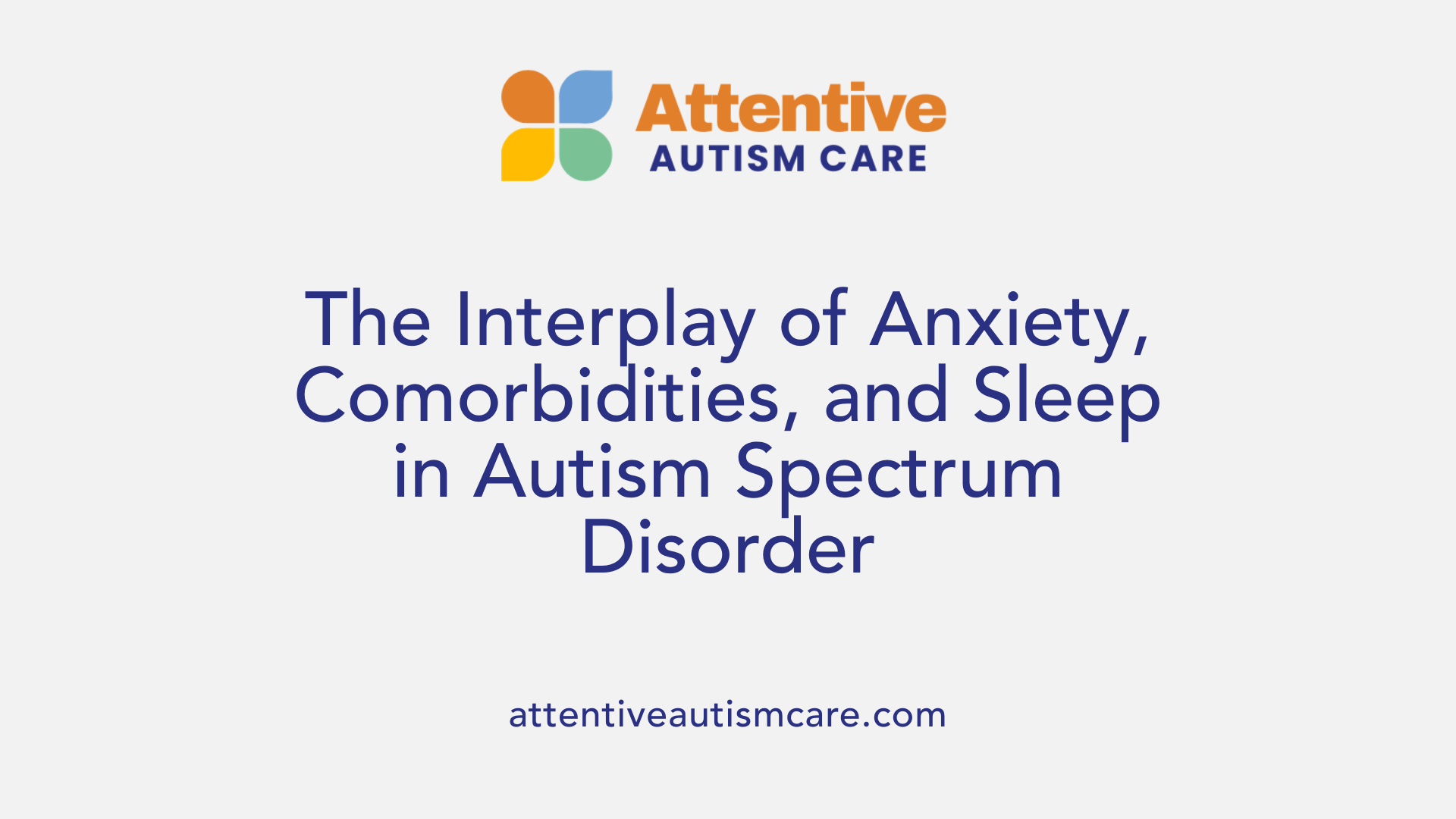
How Do Comorbidities Like Anxiety, ADHD, and Gastrointestinal Issues Affect Sleep in Children with ASD?
Sleep disturbances in children with Autism Spectrum Disorder (ASD) are often complicated by the presence of additional comorbid conditions such as anxiety, Attention-Deficit/Hyperactivity Disorder (ADHD), and gastrointestinal problems. These co-occurring conditions exacerbate sleep issues by contributing both physiological and psychological stress that disrupts normal sleep patterns.
Anxiety is one of the most common comorbidities in ASD and has been shown to increase insomnia, night wakings, and difficulty initiating sleep. Gastrointestinal discomforts, often difficult to communicate in children with ASD, may lead to chronic pain that interrupts sleep cycles. ADHD symptoms such as hyperactivity and impulsivity can also interfere with the ability to settle down for sleep, leading to prolonged sleep onset latency and nighttime awakenings.
What Is the Synergistic Impact of Comorbidities on Sleep Quality?
Research indicates that the relationship between these comorbidities and sleep problems is not simply additive but often synergistic. For example, anxiety combined with ADHD can produce more severe disturbances in sleep quality than either condition alone. The combined effect may increase hyperarousal and stress levels, making sleep initiation and maintenance even more challenging. This interplay further complicates behavioral regulation and emotional stability during wakefulness.
Moreover, gastrointestinal issues may compound these effects by causing physical discomfort at bedtime, increasing anxiety and agitation that further disrupt sleep.
Why Is Managing Co-Occurring Conditions Essential to Improve Sleep in ASD?
Addressing these comorbid conditions is critical to improving sleep outcomes in children with ASD. Effective management of anxiety through cognitive-behavioral therapy or medication, treatment of ADHD symptoms, and proper gastrointestinal care can alleviate some of the underlying causes of sleep disturbances. Additionally, improved sleep hygiene combined with targeted behavioral interventions that consider these comorbidities tends to yield better results.
Ultimately, a holistic approach that integrates management of co-occurring conditions with sleep-specific interventions is essential for enhancing sleep quality, which in turn, positively impacts behavior, mood, and cognitive function in children with ASD.
Animal Models and Neuromodulatory Systems in Autism Sleep Research
How do mouse models of autism display sleep disturbances?
Several mouse models genetically engineered to mimic autism spectrum disorder (ASD), such as those with 16p11.2 deletion, Syngap1, Shank3, and Fmr1 knockouts, exhibit notable sleep disturbances similar to those seen in humans with ASD. These mice show disrupted patterns of non-rapid eye movement (NREM) and rapid eye movement (REM) sleep, fragmented sleep cycles, and altered sleep architecture. These animal models serve as essential tools for understanding the biological basis of sleep problems associated with ASD.
Which neuromodulators are implicated in ASD-related sleep problems?
Research reveals that dysregulation of several neuromodulatory systems contributes to sleep disturbances in ASD. Important players include:
- Melatonin: Abnormal secretion patterns and receptor functioning have been observed, affecting sleep timing and quality.
- Norepinephrine, serotonin, dopamine, and histamine: Altered neurotransmitter systems in these pathways disrupt normal sleep regulation and contribute to the sleep-wake cycle irregularities seen in ASD.
These neuromodulatory disruptions help explain the complex interplay between brain chemistry and sleep deficits in autism.
What therapeutic insights have animal studies provided?
Animal research targeting neuromodulatory systems has suggested promising avenues for treatment. For example, modifying the excitability of specific neurons or receptor activities in ASD mouse models has improved sleep quality and reduced associated behavioral impairments. Pharmacological agents, including melatonin receptor agonists and drugs affecting neurotransmitter systems, show potential for enhancing sleep outcomes.
Overall, insights from animal models underscore the value of targeting neuromodulatory networks to develop novel, mechanism-based therapies for sleep disturbances in children with ASD, aiming to improve their quality of life alongside clinical symptoms.
Long-Term Benefits of Addressing Sleep Disorders in ASD
How Might Treating Sleep Disorders Help Core Autism Symptoms?
Addressing sleep problems in children with autism spectrum disorder (ASD) may lead to notable improvements in core symptoms. Sleep disturbances often exacerbate social communication deficits, stereotypic behaviors, and maladaptive responses such as tantrums and aggression. By improving sleep quality and duration, interventions may alleviate the severity of these core challenges, potentially enhancing the child's overall neurodevelopmental functioning.
What Improvements in Daytime Behaviors and Family Wellbeing Are Observed?
Improved sleep in children with ASD is linked with reductions in externalizing behaviors like hyperactivity and aggression, as well as internalizing issues such as anxiety and mood symptoms. Enhanced sleep quality also correlates with better daytime alertness, social engagement, and cognitive performance. Families often report reduced parental stress and fatigue, contributing to a more positive home environment and improved family quality of life.
Why Is Further Research on Targeted Treatments Necessary?
Although behavioral and pharmacological interventions—such as melatonin supplementation and cognitive behavioral therapy—have shown efficacy in improving sleep, treatment responses can vary widely among individuals. Current pharmacological options are not FDA-approved specifically for sleep issues in ASD, and mechanisms underlying sleep disturbances remain complex, involving genetic, neurobiological, and environmental factors. Future research focusing on personalized, objective sleep assessments and longitudinal studies will be essential to develop targeted therapies that maximize long-term benefits for children with ASD and their families.
Advancing Support for Sleep and Autism: A Path Forward
Addressing sleep disorders in children with autism spectrum disorder is essential for enhancing their behavioral, cognitive, and emotional wellbeing. Combining behavioral therapies such as ABA, pharmacological treatments, and targeted sleep interventions offers promising avenues to alleviate sleep difficulties. Early screening, individualized treatment plans, and inclusive family support are critical components to improve overall quality of life. Continued research into underlying mechanisms and novel therapeutic strategies will enrich our understanding and treatment effectiveness, ultimately fostering better outcomes for individuals living with autism and their families.
References
- Sleep and Autism: Current Research, Clinical Assessment ...
- The relationship between sleep and behavior in autism ...
- Impact of sleep disorders on behavioral issues in ...
- Sleep disturbances in autism spectrum disorder
- Behavioral Therapy for Insomnia Shows Benefit for Children ...
- The Connection Between Sleep Problems and Emotional ...
- ABA Techniques: Strategies for Behavior Analysts - GSEP Blog
- Applied Behavior Analysis (ABA)
- How to Become an Applied Behavior Analyst (ABA) Therapist








